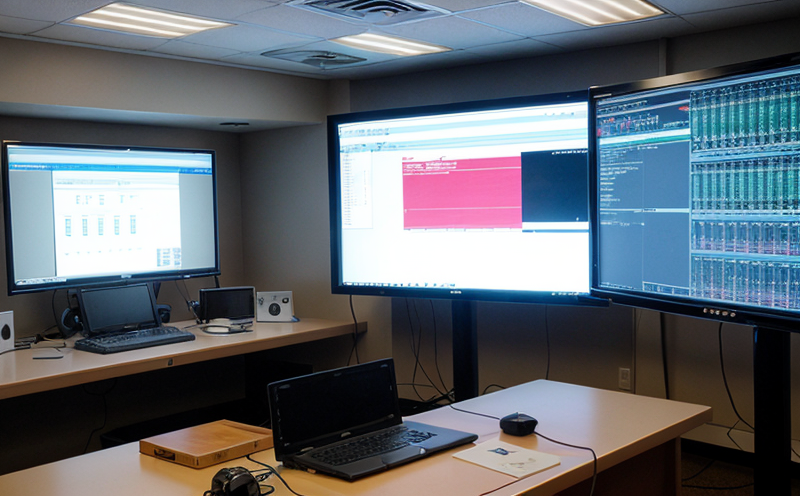EN 50128 Functional Safety Software Verification Testing
The EN 50128 standard is a cornerstone in the railway and transportation sector, ensuring that safety-related software used in signaling and control systems meets stringent functional safety requirements. This service focuses on the rigorous verification of such software to prevent failures that could lead to accidents or malfunctions.
Functional Safety (IEC 61508) is a critical aspect of railway operations where any failure can have catastrophic consequences. The EN 50128 standard specifically addresses software aspects, ensuring compliance with the overall functional safety requirements as defined by IEC 61508 and IEC 61529.
Our testing service ensures that all stages of development are meticulously validated to meet the highest standards. This includes static code analysis, dynamic testing, and formal verification methods. The goal is to identify and eliminate potential hazards at each stage of software lifecycle management, thereby enhancing safety and reliability.
The process begins with a thorough understanding of the project requirements and design specifications. Our experts then proceed to develop test cases that align with these specifications. These tests are designed to cover all critical functionalities, including edge cases and error scenarios, ensuring robustness against unexpected inputs.
Once developed, the software undergoes a series of verifications using advanced tools and methodologies. This includes:
- Static code analysis: Identifying potential bugs or vulnerabilities before execution.
- Dynamic testing: Running the software in controlled environments to observe its behavior under real-world conditions.
- Formal verification: Using mathematical proofs to ensure that the software behaves as expected at all times.
The results of these tests are meticulously documented and reported. Our reports not only detail the outcomes but also provide insights into any areas needing improvement, along with recommendations for corrective actions. This comprehensive approach ensures that our clients receive a thorough understanding of their software's safety profile.
| Industry Applications |
|---|
| Railway signaling systems |
| Train control and management systems |
| Cross-traffic control systems |
| Interlocking systems for railways |
The railway sector relies heavily on these systems to ensure the safe operation of trains. Our service supports this critical infrastructure by providing reliable verification that meets international standards.
Industry Applications
- Railway signaling systems: Ensuring that signals are correctly interpreted and actions taken accurately.
- Train control and management systems: Verifying the software that manages train movements, speeds, and stops.
- Cross-traffic control systems: Guaranteeing safe interactions between different traffic streams in complex railway networks.
- Interlocking systems for railways: Ensuring that switches and signals are correctly coordinated to prevent collisions and derailments.
| Verification Methods |
|---|
| Static code analysis |
| Dynamic testing |
| Formal verification |
The railway and transportation sector is highly regulated, and compliance with EN 50128 is essential for ensuring the safety of passengers and staff. Our service plays a crucial role in this regulatory framework by providing independent verification that meets these stringent requirements.
International Acceptance and Recognition
The international acceptance and recognition of EN 50128 have solidified its position as the benchmark for functional safety software in railway applications. This standard is widely recognized by regulatory bodies, manufacturers, and operators worldwide.
- Australia: The Australian Railway Authority (ARA) recognizes the importance of EN 50128 in ensuring safe signaling systems.
- European Union: EU directives mandate compliance with EN standards for railway safety equipment.
- United States: While not directly applicable, similar standards are used in American rail systems to ensure safety.
The acceptance of this standard is a testament to its effectiveness and reliability. It provides a common language and set of practices that can be universally understood and applied across different countries and regions.
Competitive Advantage and Market Impact
Compliance with EN 50128 is not just about meeting regulatory requirements; it also offers significant competitive advantages. By ensuring that your signaling and control systems meet these stringent standards, you demonstrate a commitment to safety and reliability.
Our service helps companies:
- Gain market access in highly regulated regions like the EU.
- Differentiate themselves from competitors by offering safer products.
- Avoid costly recalls or accidents that could harm reputation and business.
In a sector where trust is paramount, compliance with this standard can significantly enhance your company's standing among clients and stakeholders. It also opens doors to new markets and partnerships.





